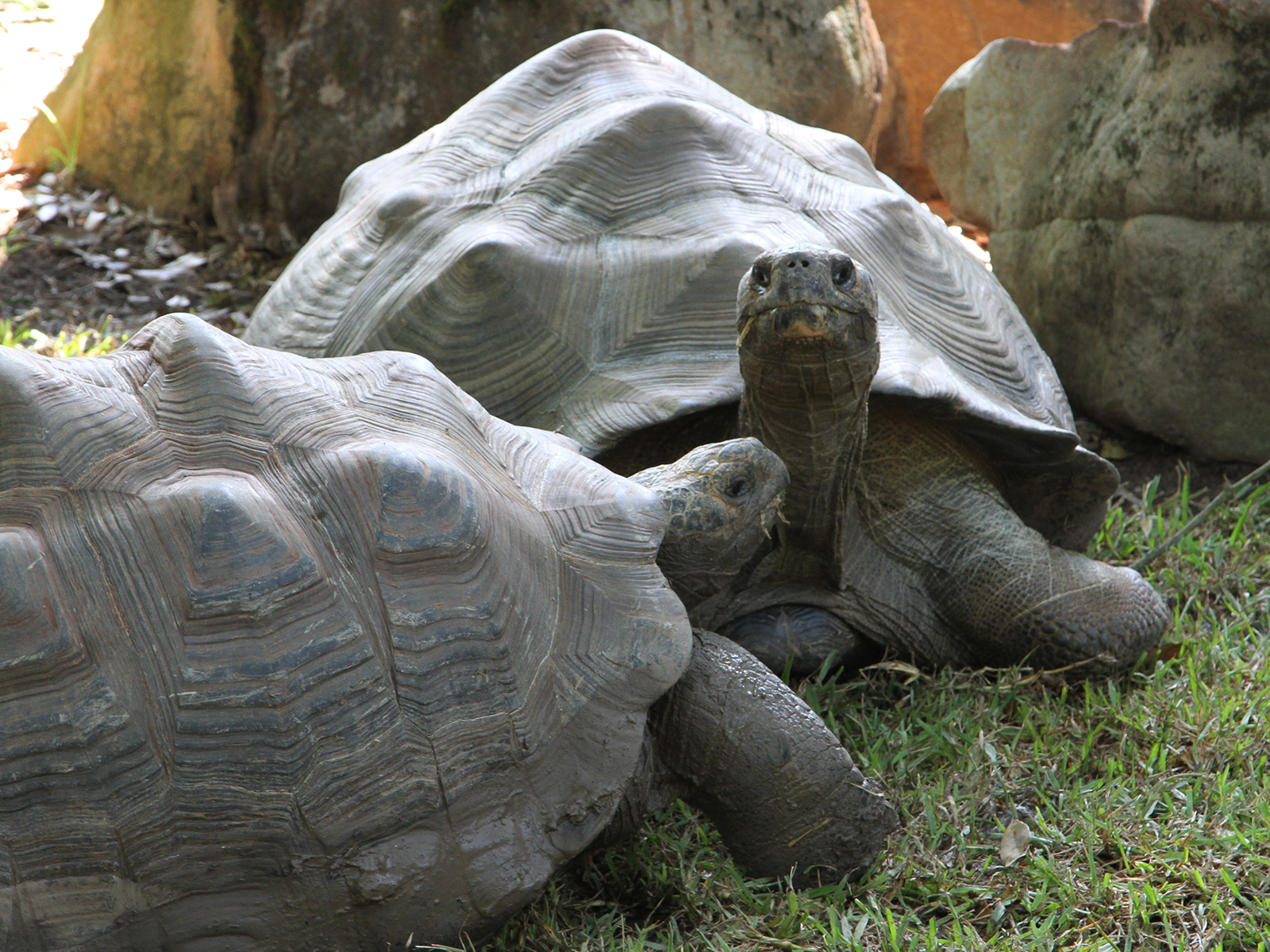Galapagos Tortoise
Chelonoidis nigra
Class
Reptilia
Order
Testudines
Family
Testudinidae
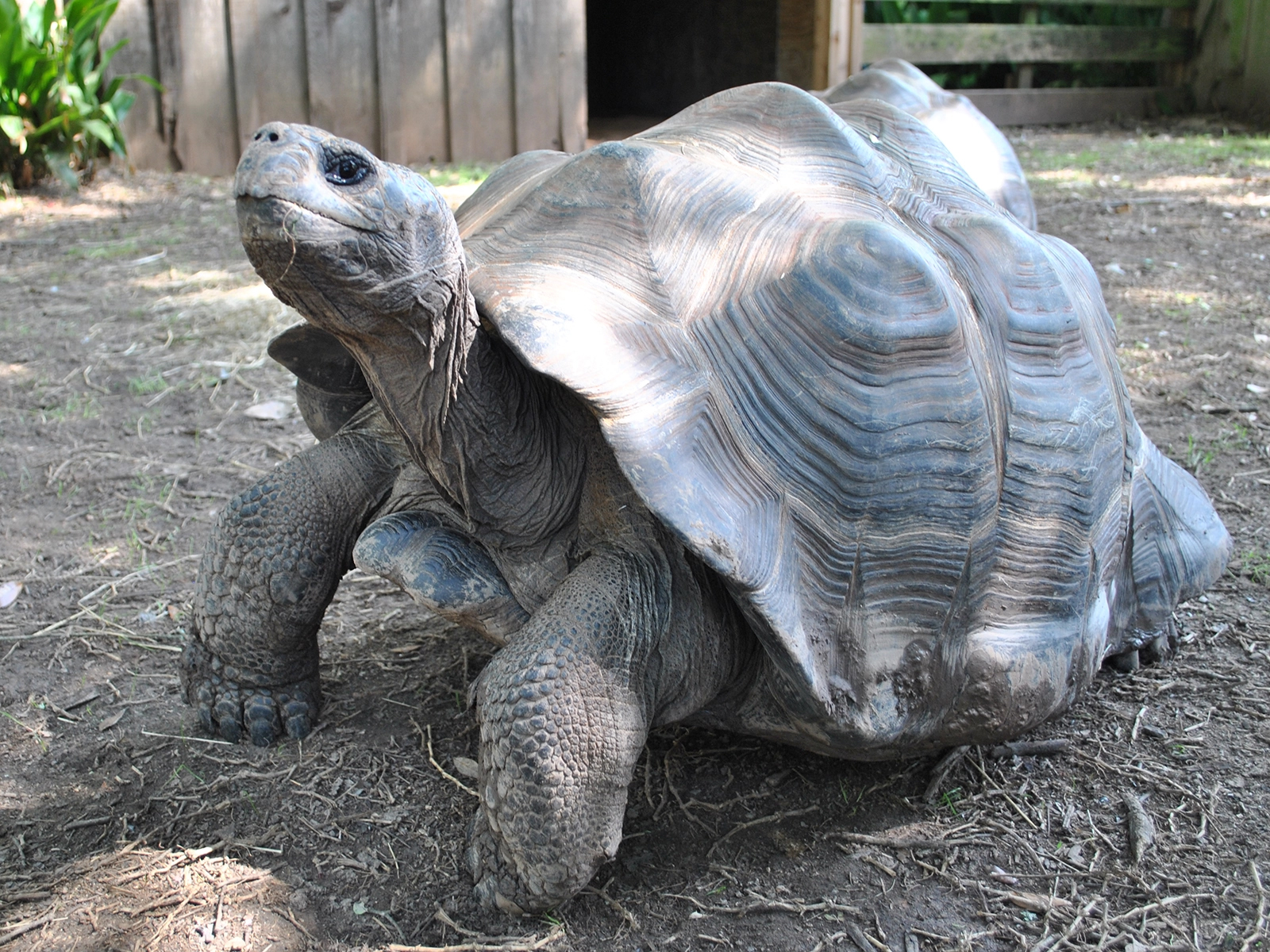
Reptilia
Testudines
Testudinidae
Galapagos Islands, 600 miles west of Ecuador
Length: Head to Tail Up to 6 ft
Shell 4 - 5 ft
Weight: Males up to 575 lbs, Females up to 300 lbs
Open, grassy areas to rocky, volcanic outcrops
Clutch: 2 - 16 eggs
Incubation: 85 - 200 days
Prickly pear cactus and fruits; flowers, leaves, and grasses
Vulnerable
Adult male Galápagos tortoises can weigh up to 600 pounds! These giant tortoise weigh 3 ounces at hatching.
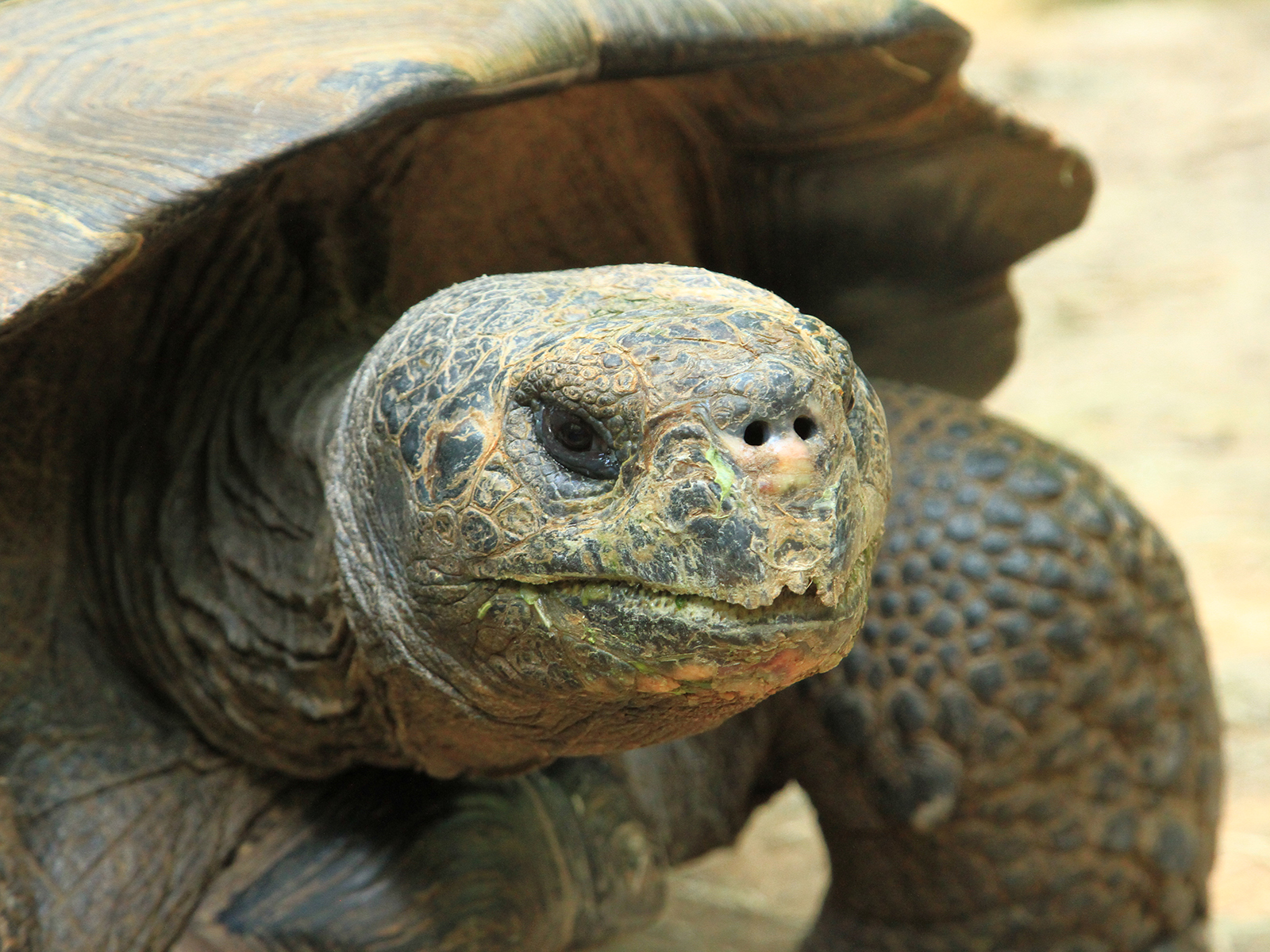
They are slow-moving animals, moving only 0.16 miles per hour. This species is diurnal (active during the day). They can live to be over 100 years old.
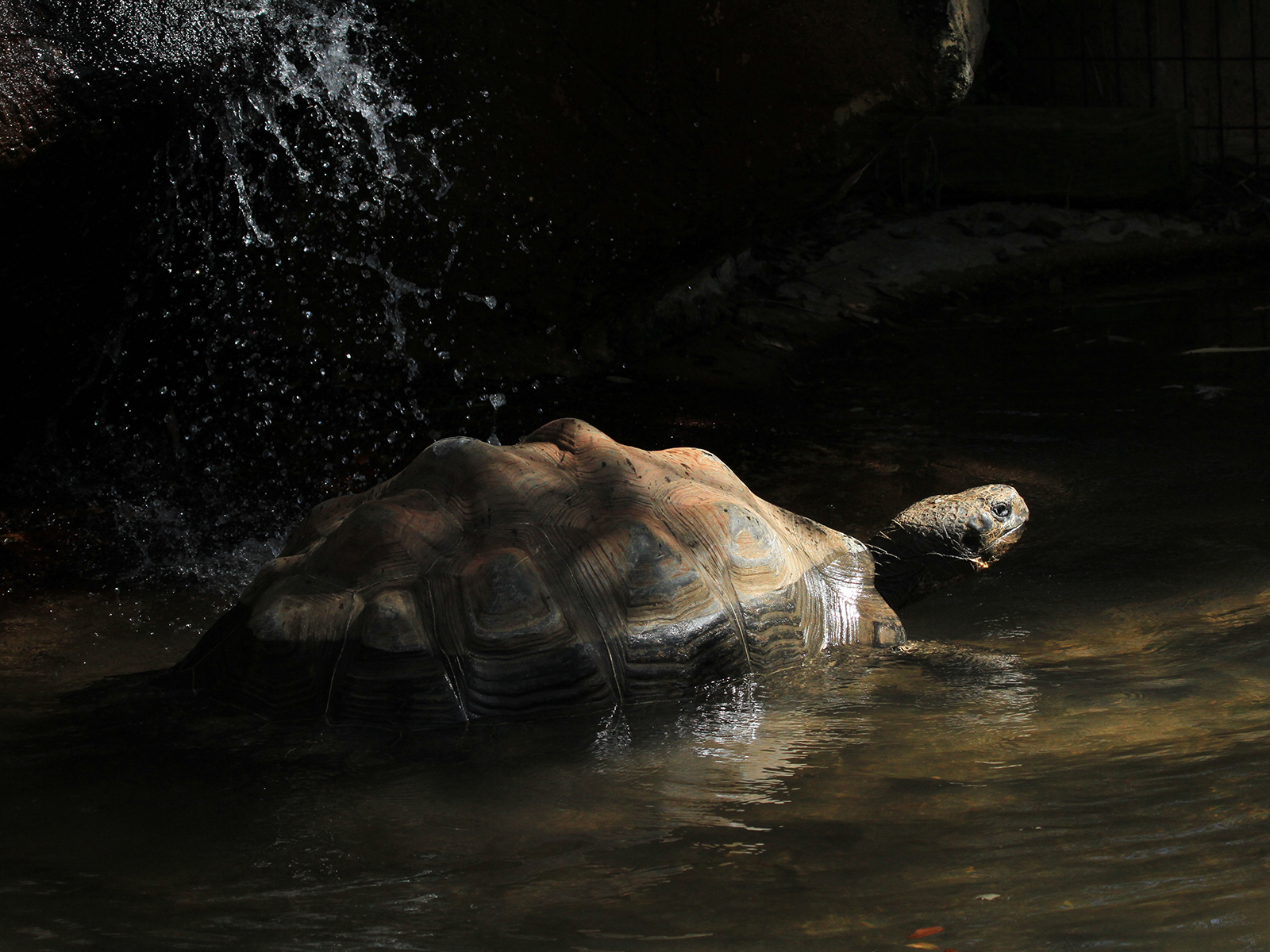
Their shells are made up of honeycomb structures that enclose small air chambers. This makes it possible for the tortoises to carry the weight of the shell. The shell does not have a hinge.
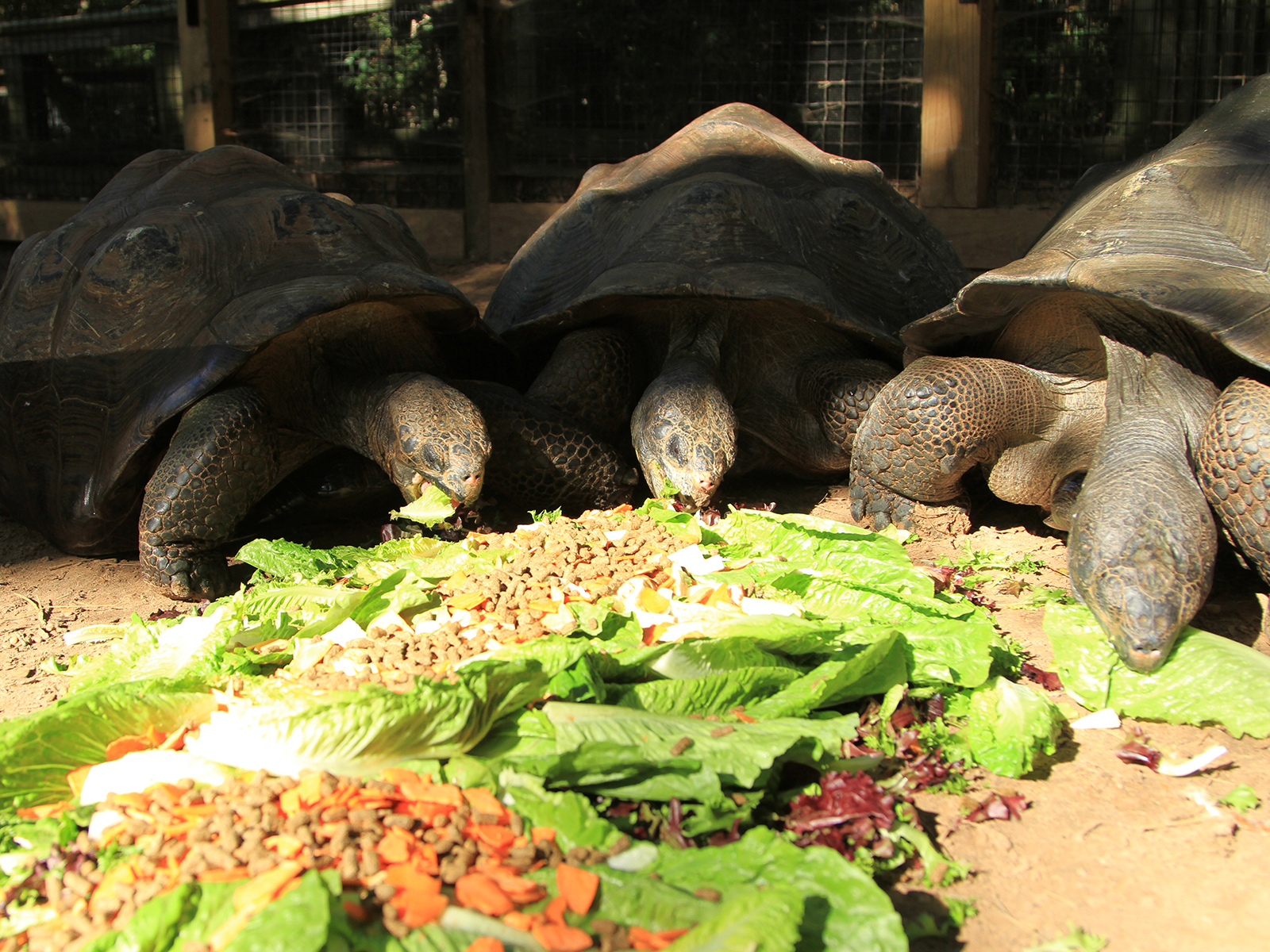
Their lower jaws are covered by horny ridges with serrated edges that help them cut through tough plants.
These giant tortoise were nearly wiped out by sailors who killed them for food. Laws are now in place to protect this species.
Today, the greatest threats to the tortoises come from introduced nonnative species to the islands, such as rats, dogs, and cats, which eat tortoise eggs and young tortoises. Also goats and cattle compete with them for available food.
Minimize Plastic Pollution. Reduce your use of single-use plastics, as marine debris, including plastic, can pollute the ocean surrounding the islands and can harm wildlife.
Live Sustainably. Reducing your overall carbon footprint helps combat global climate change, which threatens the delicate ecosystems of the Galápagos.
Educate Others. Share information about the tortoises, threats to their species, and the importance of conservation efforts to raise global awareness.
Sarah, Bitsy, & Kelly: Hatched 1991.
